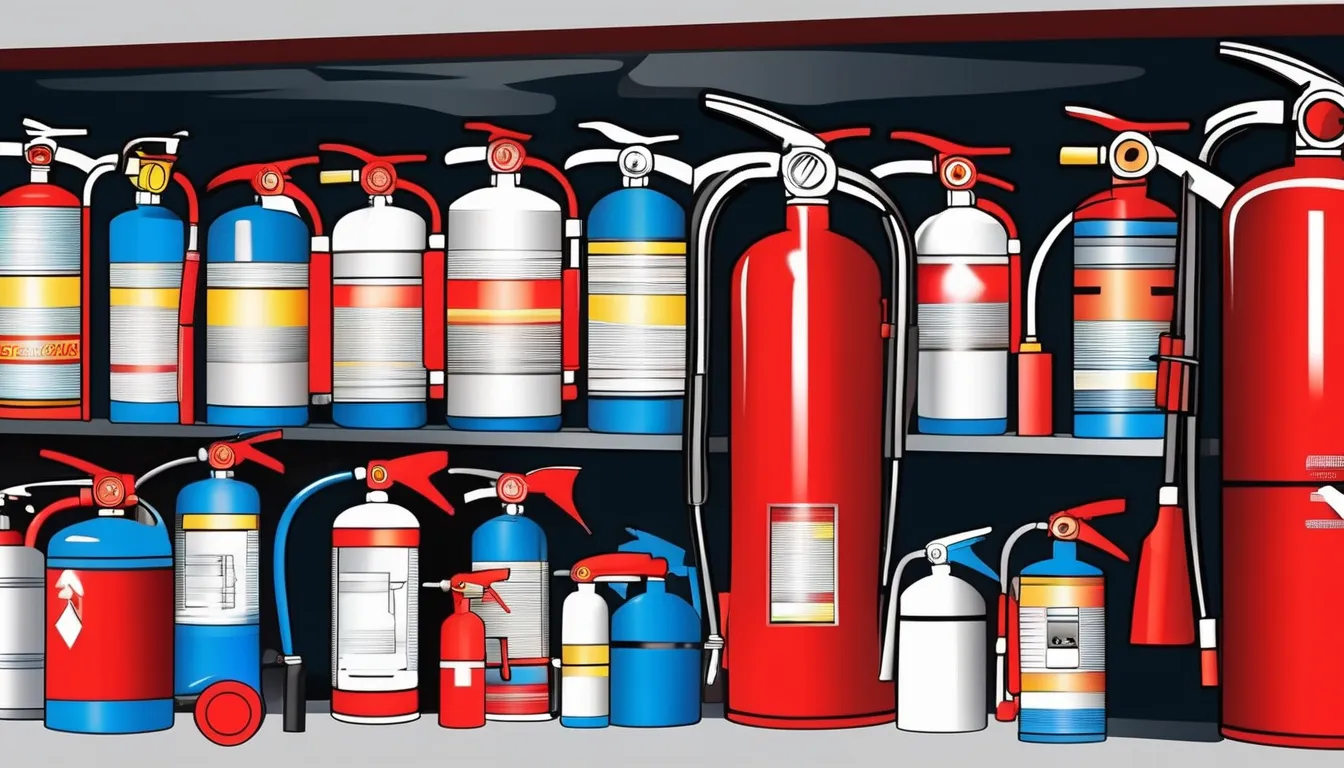When it comes to fire extinguisher maintenance, the hydrostatic test is a fundamental procedure. It serves as a critical checkpoint to ensure the reliability and safety of these firefighting tools. But do you know the specific scenarios that necessitate this test? Stay tuned to discover the key reasons behind the hydrostatic test requirement and how it plays a vital role in fire safety protocols.
Key Takeaways
- Hydrostatic testing checks for leaks and weaknesses in fire extinguishers.
- Frequency varies by extinguisher type, typically every few years.
- Required for water, CO2, dry chemical, and wet chemical extinguishers.
- Process includes pressurizing, monitoring pressure changes, draining, and refilling.
- Compliance with NFPA regulations and manufacturer’s instructions is crucial.
Importance of Hydrostatic Testing
Ensuring the safety and effectiveness of fire extinguishers is paramount in any environment where fire hazards exist. When it comes to the importance of hydrostatic testing, it can’t be overstated.
Hydrostatic testing is a critical procedure that involves subjecting a fire extinguisher to high-pressure conditions to check for leaks or weaknesses in the container. This process helps to ensure that the extinguisher can withstand the pressures it may encounter during a fire emergency.
Frequency of Testing Requirements
To maintain the safety and reliability of fire extinguishers, it’s necessary to adhere to specific testing schedules. Regular testing is crucial to ensure that fire extinguishers will function effectively in case of an emergency. The frequency of testing depends on the type of fire extinguisher and its intended use.
Portable fire extinguishers typically require hydrostatic testing every few years. However, specific requirements can vary based on factors such as the extinguisher’s design, materials, and manufacturer recommendations. It’s essential to consult with a certified professional to determine the exact testing schedule for each fire extinguisher in your facility.
In high-risk environments or where fire extinguishers are subjected to harsh conditions, more frequent testing may be necessary to guarantee their operational readiness.
Neglecting testing requirements can result in non-compliance with safety regulations and potentially lead to malfunctioning extinguishers during a fire emergency. By staying proactive and following the recommended testing schedules, you can help ensure that your fire extinguishers are always prepared to effectively combat fires.
Types of Fire Extinguishers Requiring Testing
Regular testing is imperative for maintaining the reliability of Inspección y mantenimiento de extintores s. Different types of fire extinguishers require testing to ensure their effectiveness in emergencies. When it comes to testing fire extinguishers, there are specific types that need to undergo the hydrostatic test to guarantee their safety and functionality:
- Water Extinguishers: These extinguishers, often found in Class A fire situations, need to undergo hydrostatic testing every five years.
- CO2 Extinguishers: Carbon dioxide fire extinguishers, commonly used for electrical fires, should be tested every five years.
- Dry Chemical Extinguishers: These extinguishers, suitable for Class A, B, and C fires, require hydrostatic testing every twelve years.
- Wet Chemical Extinguishers: Typically used in commercial kitchens for Class K fires, wet chemical extinguishers need testing every five years to ensure they’re ready for emergencies.
Process of Conducting the Hydrostatic Test
When it comes to maintaining the reliability and safety of fire extinguishers, conducting the hydrostatic test is a crucial step in ensuring their functionality during emergencies. This test involves filling the extinguisher with water or another non-compressible fluid and pressurizing it to a specific level to check for any potential leaks or defects in the container. Here is a breakdown of the process:
| Step | Description | Importance |
|---|---|---|
| Visual Inspection | Check for external damage or corrosion | Ensures structural integrity |
| Hydrostatic Testing | Pressurizing to test for leaks | Identifies weaknesses |
| Pressure Recording | Monitoring pressure changes over time | Ensures stability |
| Draining | Removing the test fluid | Prepares for refilling |
| Refilling | Recharging the extinguisher | Ready for emergency use |
Compliance and Safety Standards
Ensuring compliance with established safety standards is paramount when it comes to conducting hydrostatic tests on fire extinguishers. To guarantee the safety and effectiveness of the process, it’s crucial to adhere to the following guidelines:
- NFPA Regulations: Always follow the National Fire Protection Association regulations specific to hydrostatic testing of fire extinguishers.
- Manufacturer’s Instructions: Abide by the manufacturer’s guidelines for conducting hydrostatic tests to ensure the extinguisher remains in proper working condition.
- Qualified Personnel: Only trained and certified individuals should perform hydrostatic tests to minimize risks and ensure accuracy.
- Proper Equipment: Utilize calibrated and suitable testing equipment to guarantee precise results and maintain safety standards.
Conclusion
In conclusion, ensuring the proper hydrostatic testing of fire extinguishers is essential for maintaining safety and effectiveness in emergency situations. By adhering to the required testing schedules and standards, you can guarantee that your extinguishers are in optimal condition to protect lives and property. Don’t overlook the importance of this crucial procedure in maintaining fire safety in your environment.

